The secret garden on the mountain
Now I am observant. I see things. I particularly see garden things. Landscapes. Vegetation. And I’m always up for a fascinating peep at a hamlet of stone houses.
This week I have missed two incredible such wonders.
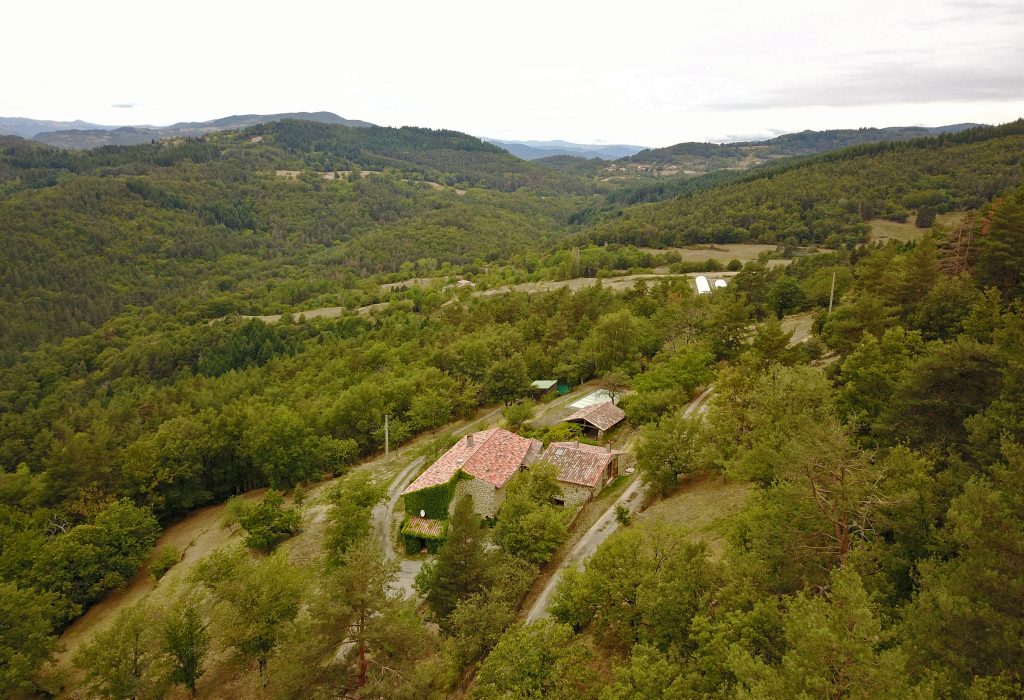
And we are talking, ‘I have lived here for almost fifteen years and I never noticed that’ sort of wonders. So it’s a bit embarrassing, but I’ll fess up and explain.
Not five hundred metres below our house is a small collection of houses in a loose hamlet called La Borie. It took me a decade to dare to turn down the road leading off into the unknown. It had a ‘scary dog menace if you step further’ vibe. And I thought the little road only led to one farm.
In fact what I found when I finally dared to descend was a beautiful old hamlet of about three houses – you can never tell how many there are in some of our Ardeche collection of falling down stones that resemble a home. I even came across a fab modern home built by a German architect. Then there was the sawmill and the ubiquitous barking dogs and I never went further.
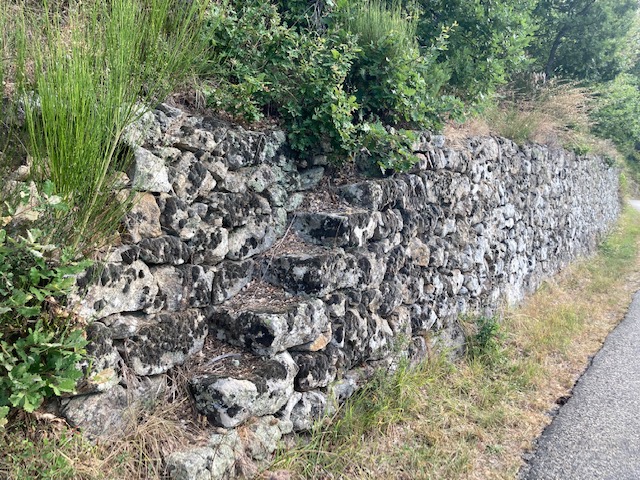
Well, some days I dare because there is an excellent walking path through the woods that skirts a small farm – you just have to hope the barking frenzy of excitement is one that is securely tied up or locked in.
I imagined once that I glimpsed a hamlet hidden in the trees when I was on the other side of the valley from our mountain. But surely not. My sense of direction is hilariously poor and I assumed I was looking the wrong way. And besides, who hides a whole hamlet of houses not five hundred metres from one’s home?
Apparently we do.
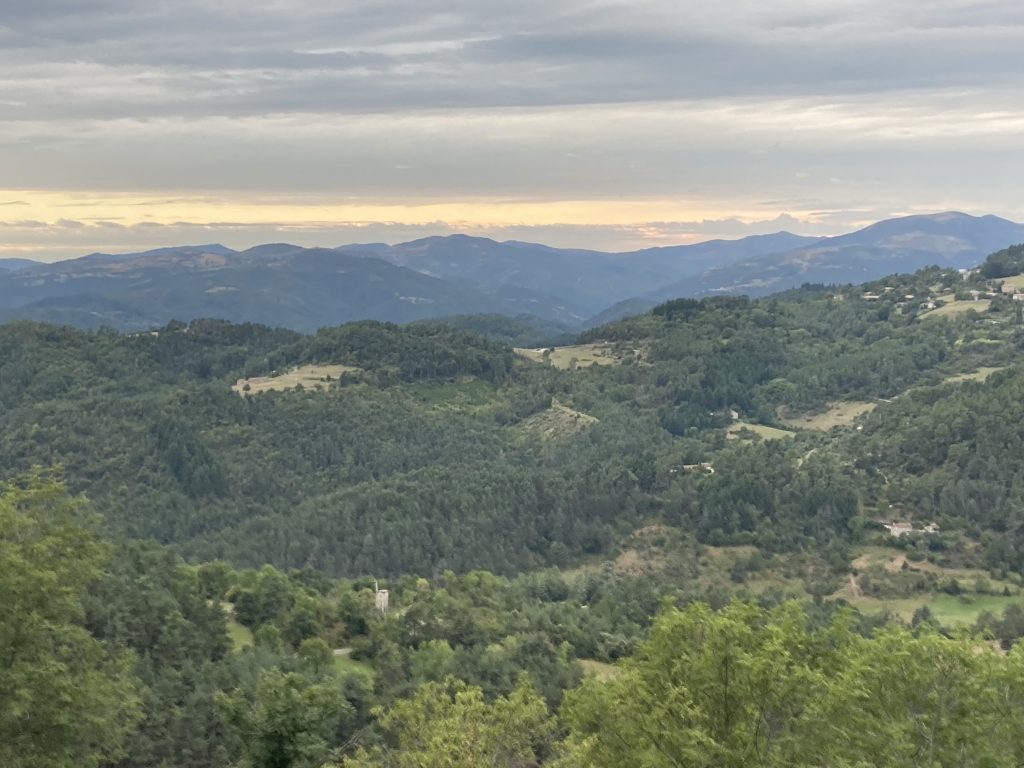
It was a great surprise to many round here. And it was only part of the lean on the car door chat with neighbours that I found out about it myself. We definitely need another Fete de Voisins dinner so everyone can hear it all at once.
Being in the forest and in the heat and in bushfire country the Fire Brigade take great care to check that people don’t have dense vegetation within 50 metres of their houses. Especially not pine trees. I assumed this was a check done by driving around and having a good old snoop (our volunteer fire brigade in the nearest town are exceptionally nosy folks).
But no. It’s done by helicopter. And our tiny part of the very big world had a good old thorough clattering noisy swoop a few months back. We just assumed it was the phone line people checking the state (the sorry state) of the wires and poles.

Turns out it was a vegetation check. And in their low level snooping they found one hamlet that was not so abandoned after all.
A hermit!
We have a hermit living in our midst. An elderly man who is one of the siblings of the original owners of this hamlet down the mountain. Descended from ‘White Russians who escaped the Pogroms’ in the 1920s no less.
The hamlet was supposed to be shared among the children (now all in their 70s and 80s) but one sibling was so disagreeable he insisted on staying on and fought the others off.
They left (our news source is from the brother who now lives in Cannes on the coast) and left him very much to it. And so has the rest of the world; apart from one low swooping chopper that decided the trees and vegetation had penetrated the hamlet far enough.
And what do the clever Fire Service do to inspire a bit of a hurry up to get things cleared? They fine you.
Daily. Every single day until you have the land cleared. And the sum can build up in no time to an eye watering sum. So siblings staggered up from all parts away from the difficult brother who was obviously not going to pay and set to work.
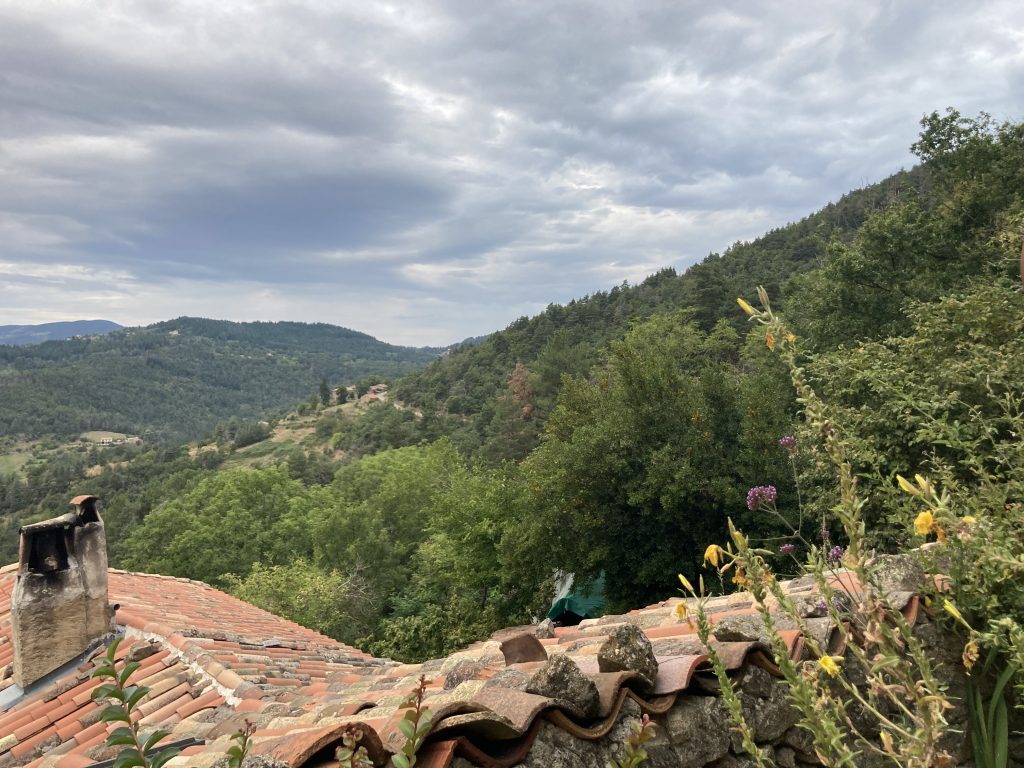
I’m yearning to go and see. But of course the incursion on this hermit’s world was not a success and his dogs are as ferocious as ever. But I might do a sneaky walk nearby with my GPS tracker and then download the satellite map on zoom to see what all the excitement is about.
[Here you go; I think this is it.]
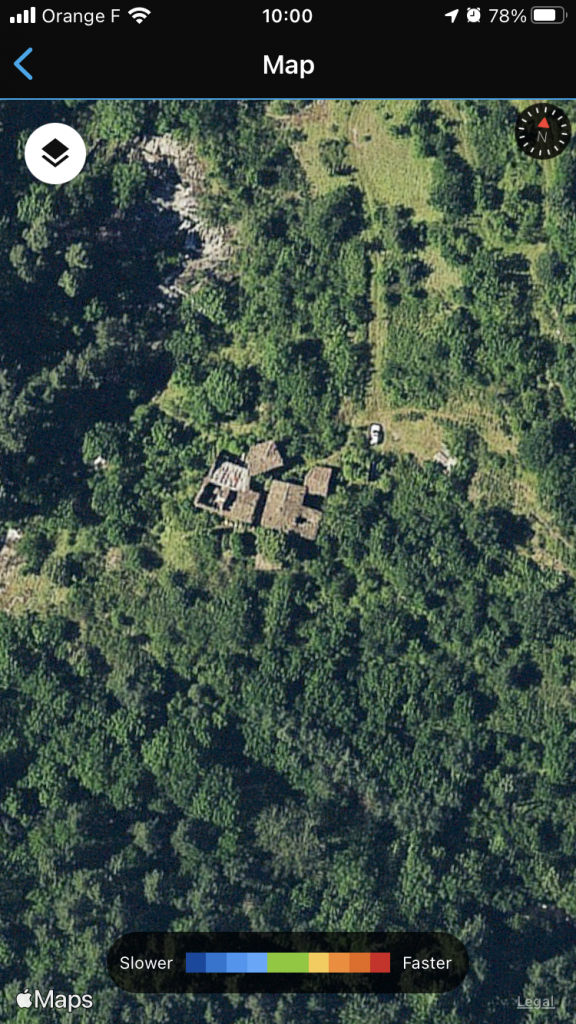
The other excitement I can show you.
And this one is a true delight. Our lovely, lovely neighbour Flora decided it was time we try and find the magic path that links our farm with their hamlet on the next mountain round. By road it is 1.6kms to their door. About twenty minute’s walk. And I do it every day as part of my one hour loop. You have to go down our track to the ‘main’ road, descend, descend, turn left, and then walk up their track to theirs.
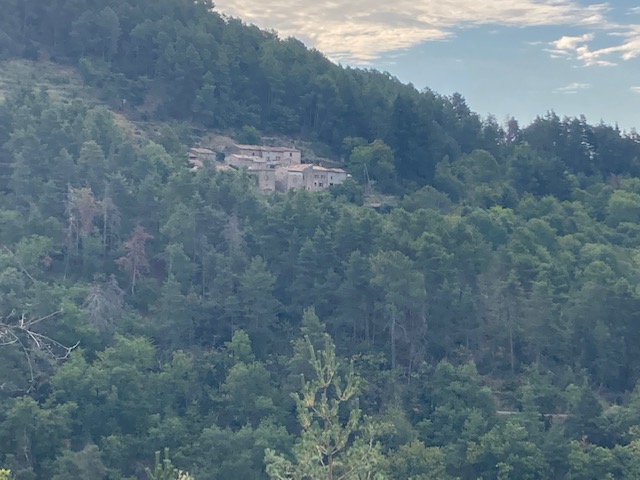
I’m sure I have blethered on about this.
But for the Australian readers who are entering yet another month of Beyond Tedious Lockdown I thought I’d give you a long read today to distract you. But fear not, I have pictures to illustrate this bit.
Those of you with busier lives can stick to the happy ending.
As you might know, from the 1500s we had the Wars of Religion in this part of France where the Protestants were persecuted for practicing their religion.
And here is the bit where I insert something I just copied from the internet:
The Dragonnades were a French government policy to intimidate Huguenot families into converting to Catholicism. This involved the billeting of ill-disciplined dragoons in Protestant households with implied permission to abuse the inhabitants and destroy or steal their possessions. The soldiers employed in this role were satirized as “missionary dragoons”.
Now I am sure that the wealthy parts of the Ardeche were better pickings for these dragonnades. But every Protestant family – of which this farm was one -did not want to encounter any trouble. So instead of appearing on the more public ‘roads’ during their daily lives they created these paths through the forest.
It was all a bit moot as everyone knew who the Protestant families were. They were shunned by all the usual administrative offices. Children unable to attend the parish school, unable to be buried in the local cemetery, and in fact their names just disappeared from the records. The inhabitants of our part of the mountain are in the records from 1550 up to the 1720s, but then there is a huge blank until 1814. But they were here, working away at the poor land, growing their mulberries for the silkworm production, growing chestnuts, harvesting, eking an existence. And obviously in close contact with their ‘neighbours’ who lived on other isolated properties and needed to be part of their persecuted world.
Hence the secret paths.
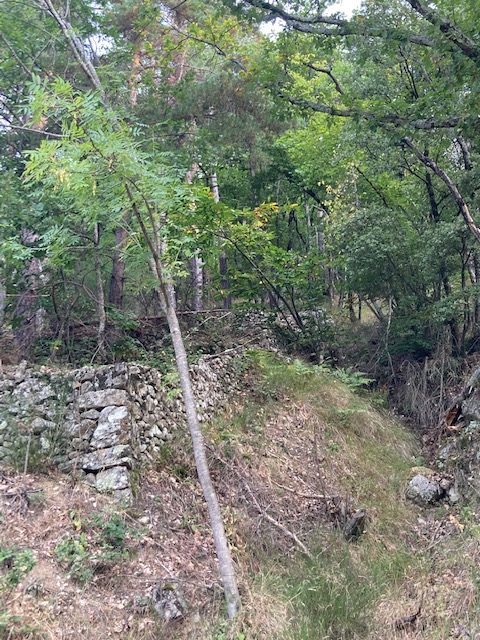
There are zillions of forest paths, many made by wild boar and deer and unremarkable. But some are what we call the pilgrim paths, stone built tracks and often with fruit trees planted along the way to feed people as they trekked. Apples mainly, cherries and figs. (And that may be entirely decorative as a story because we have lots of apple and cherry trees in the forest, seeds no doubt spread by birds.)
But this is embellished legend so we are going for pilgrim apples.
The paths were particularly useful on Sundays when the Protestants would hold their parish services secretly in the forest. One member of each household would carry a piece of wood that looked entirely innocent until it was assembled as a pulpit and the minister would be able to preach in a semblance of a ‘church’. If caught, one piece of wood could not constitute a crime.
We have found one diagonal pilgrim path that leads up to the very summit of our mountain top from the forest above our water source. But it’s a slog. And doesn’t make sense to connect to two farms.
Flora announced that her summer project was to find the path that links our two hamlets. It was in there somewhere. We just need to have a good look.
One Sunday morning two weeks ago she and I caught the mad gleam and starting from her hamlet, we turned left and plunged in.
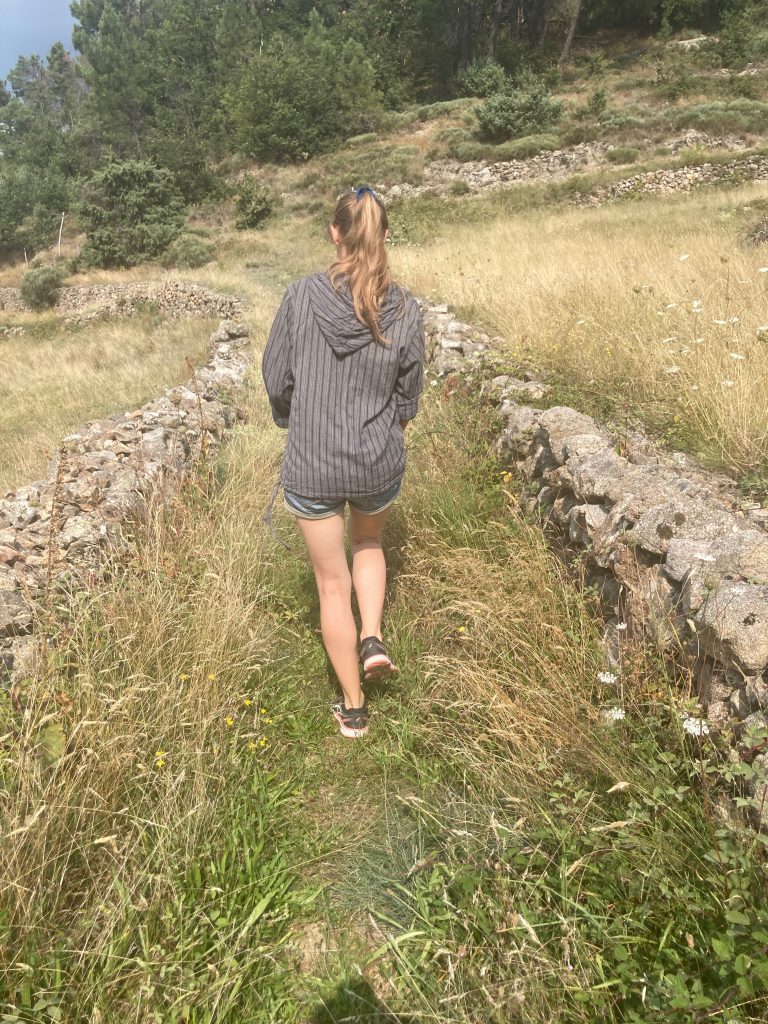
I cannot believe we were both wearing shorts. Work boots, yes, secateurs in hand, but not heroically attired for the adventure at all. We bashed our way through brambles and trees and eventually emerged way above our farm without a skooby of a clue. There was no path.

So we regrouped with cold drinks and soothing cream for the scratches and decided a bit of research might not be a bad idea.

We looked online at the 1950s aerial map of the mountain.
I do so love a decent website of maps. Geoportail.gouv.fr if you haven’t delved.

You can see your home from space easily enough. But when it is a tree covered thicket, it doesn’t show much.

But behold the archive maps showing life on the mountains in the 1950s. The cultivated land is extraordinary compared to today.
And before we went even further back to the Cassini maps of the Napoleaonic era we set out again.
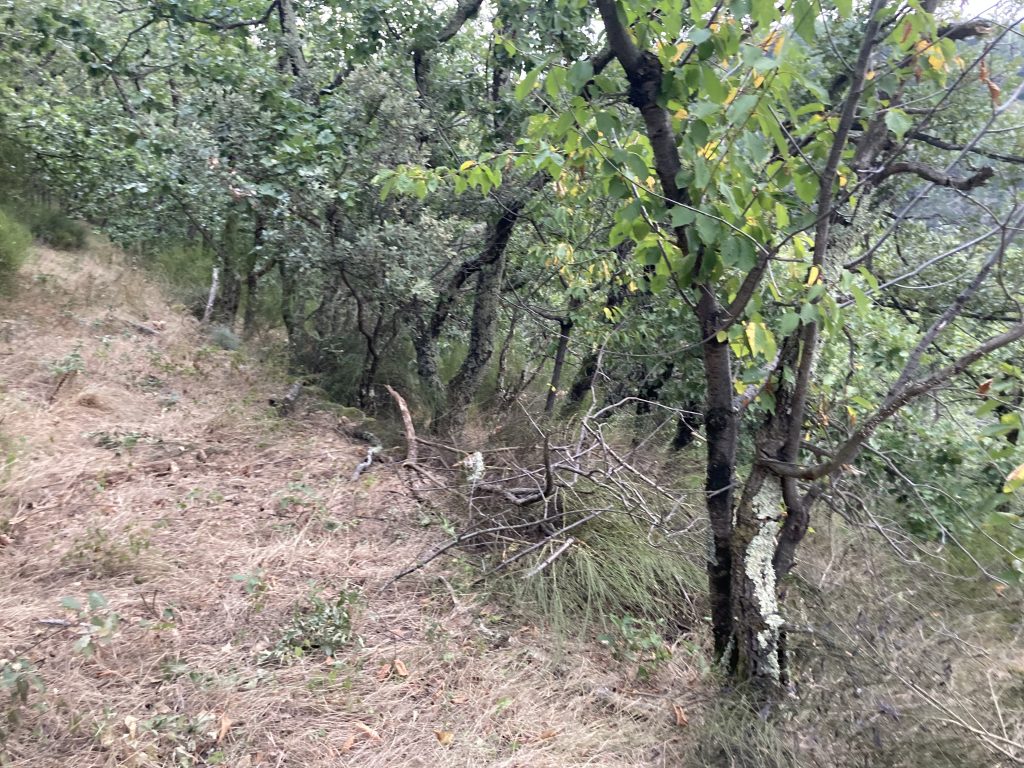
And found it. We found the beautiful stone built path.
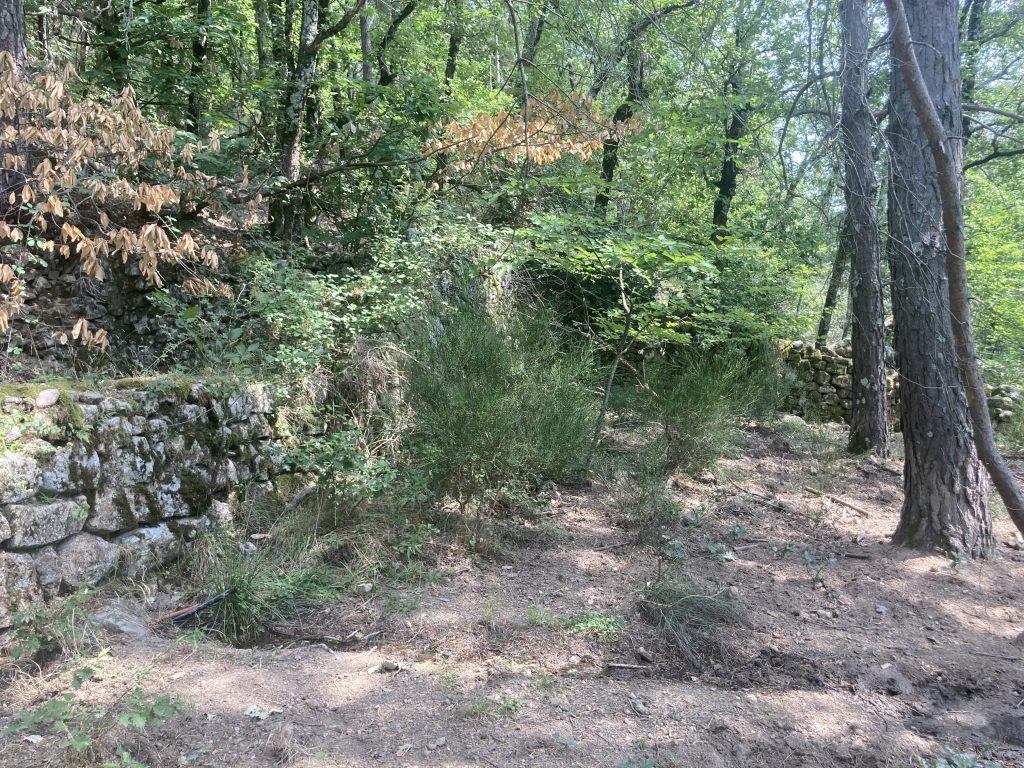
Well, we have found 70 per cent of it. We did get a bit lost at the beginning and the end. And Flora has been working like mad the past week to clear the invading brambles and broom and even linked the last 100 metres to the Eco Museum track. A path so ‘obvious’ I’m appalled I didn’t find it when I triumphantly returned for the third time that day back home. (Hopelessly lost, I’m amazed I didn’t run into a ranting hermit in his hamlet telling me to ‘get orf his land’.)
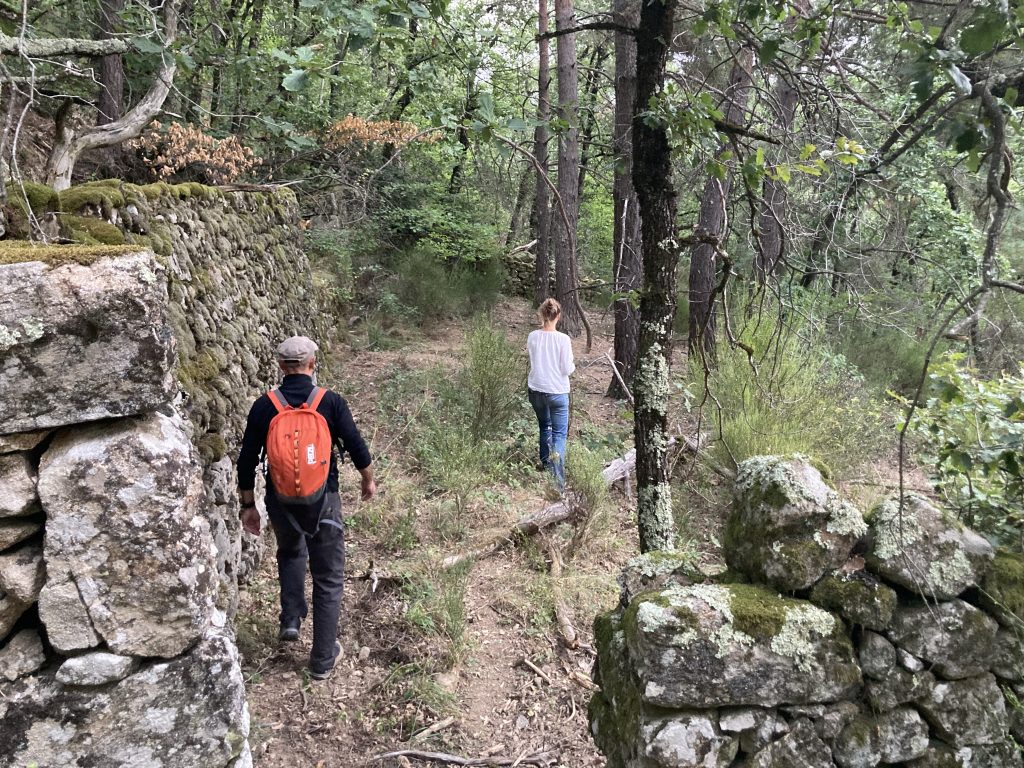
And halfway along this magical oak glade is something even better.
A walled garden.
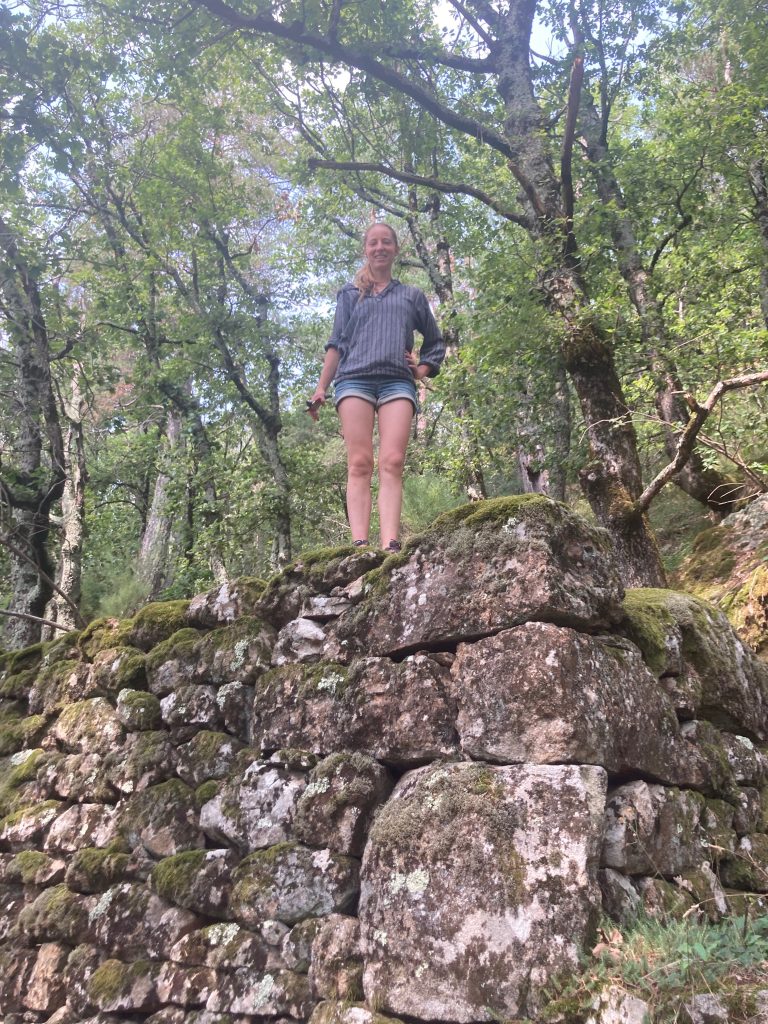
The size of a tennis court walled garden.
Ten foot high stone wall high walled garden.
How on earth did I ever miss that? It’s magnificent. And obviously built there to take advantage of the underground spring that is still trickling water and is begging for a restoration.
The structure is in two parts. The huge garden for cultivation. And then behind a giant stone basin – more of of a swimming pool in size – that obviously held the water from the spring all year round and fed the crops.
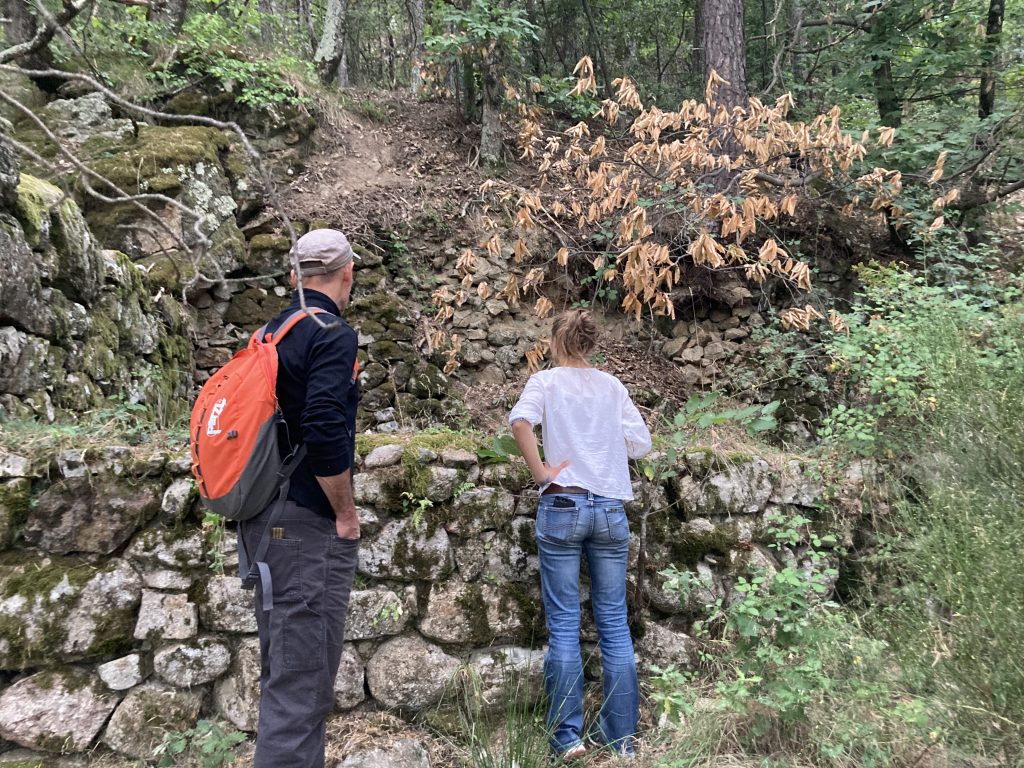
I don’t know how well you can see it from my photos. I must admit to be shaking a bit from excitement and shock. But it’s glorious.
And a wonderful reward for bashing through the trees.
Flora escorted us last night to dinner at their hamlet. And came to collect us for the inaugural walk along the path. She had cleared and hauled stones, and even left little strips of yellow fabric on the trees to show the way.
And as a final delight, her cat came too.
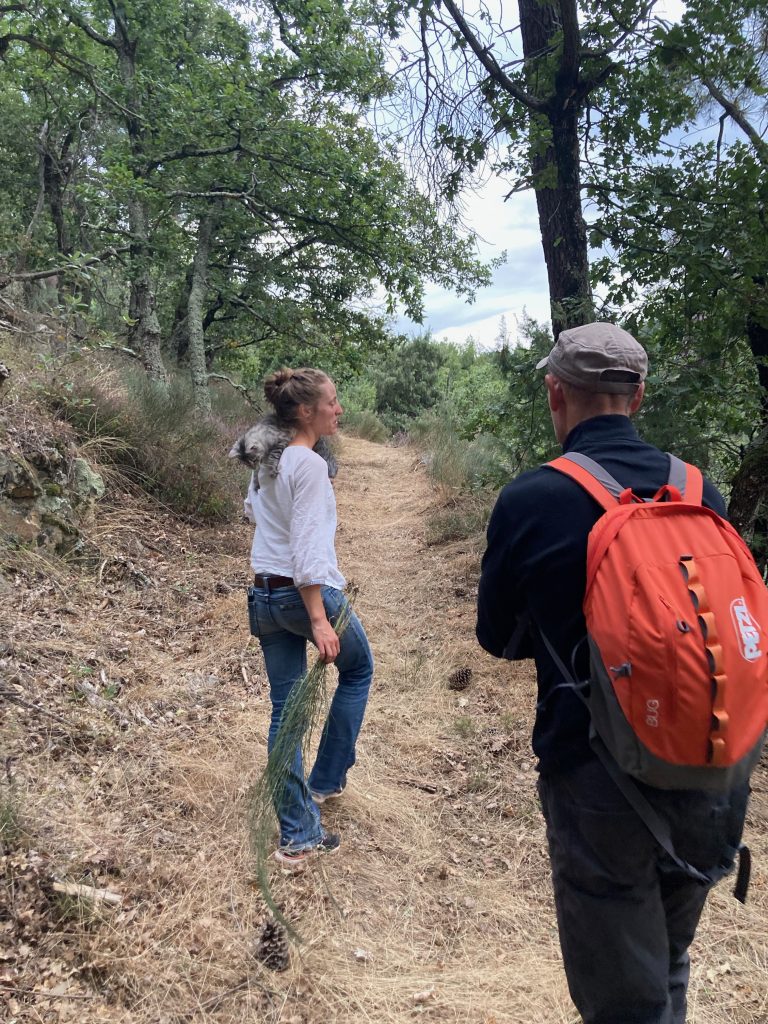
That’s a long way for a cat with little endurance but a lot of plucky spirit. Lula is the sort of cat that makes you want to weep with envy at such a biddable and willing to be carried creature. She just drapes in your arms, purring.

We all skipped back (well, a few trips on hidden vegetation, but it’s a work in progress) to their home and celebrated with a wonderful dinner in their summer dining area.
Bliss.
The return journey? No, we weren’t brave and their had been wine.
So at midnight, we wended our way home sensibly by tarmac and head torches and didn’t even spook a boar. But as soon as I don the sturdy trousers and pocket my secateurs I’ll be heading through the path in the forest again. My daily ‘commute’ through history and nature. And if I move aside a branch or a stone each day I’ll have it in shape in no time.
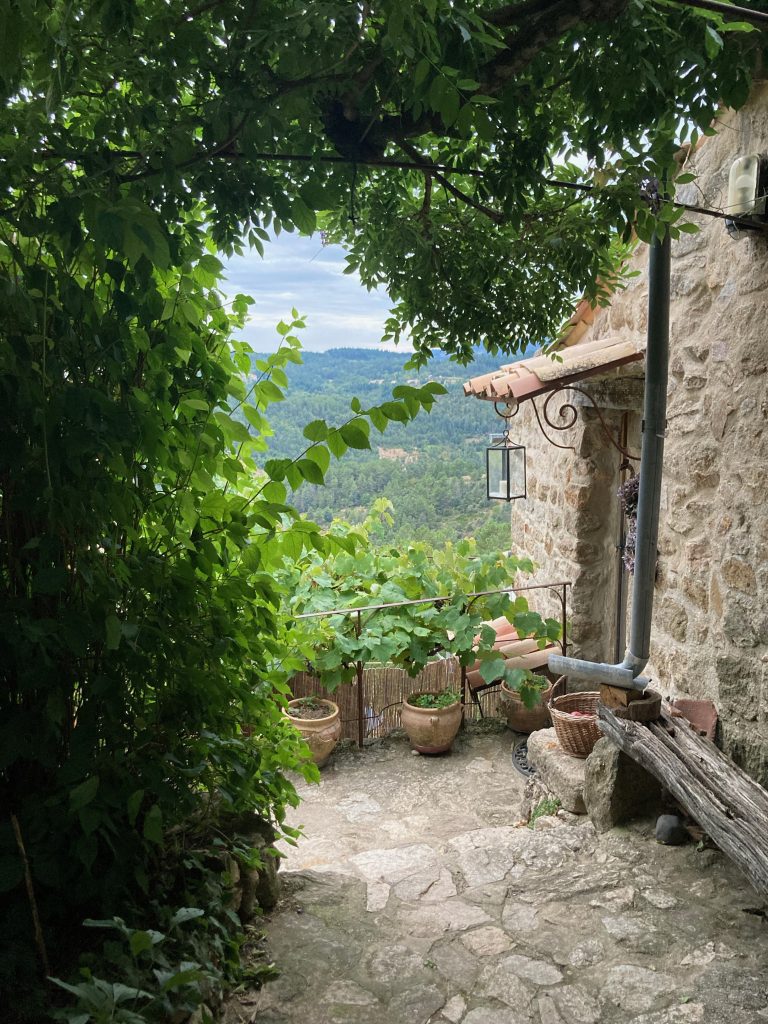
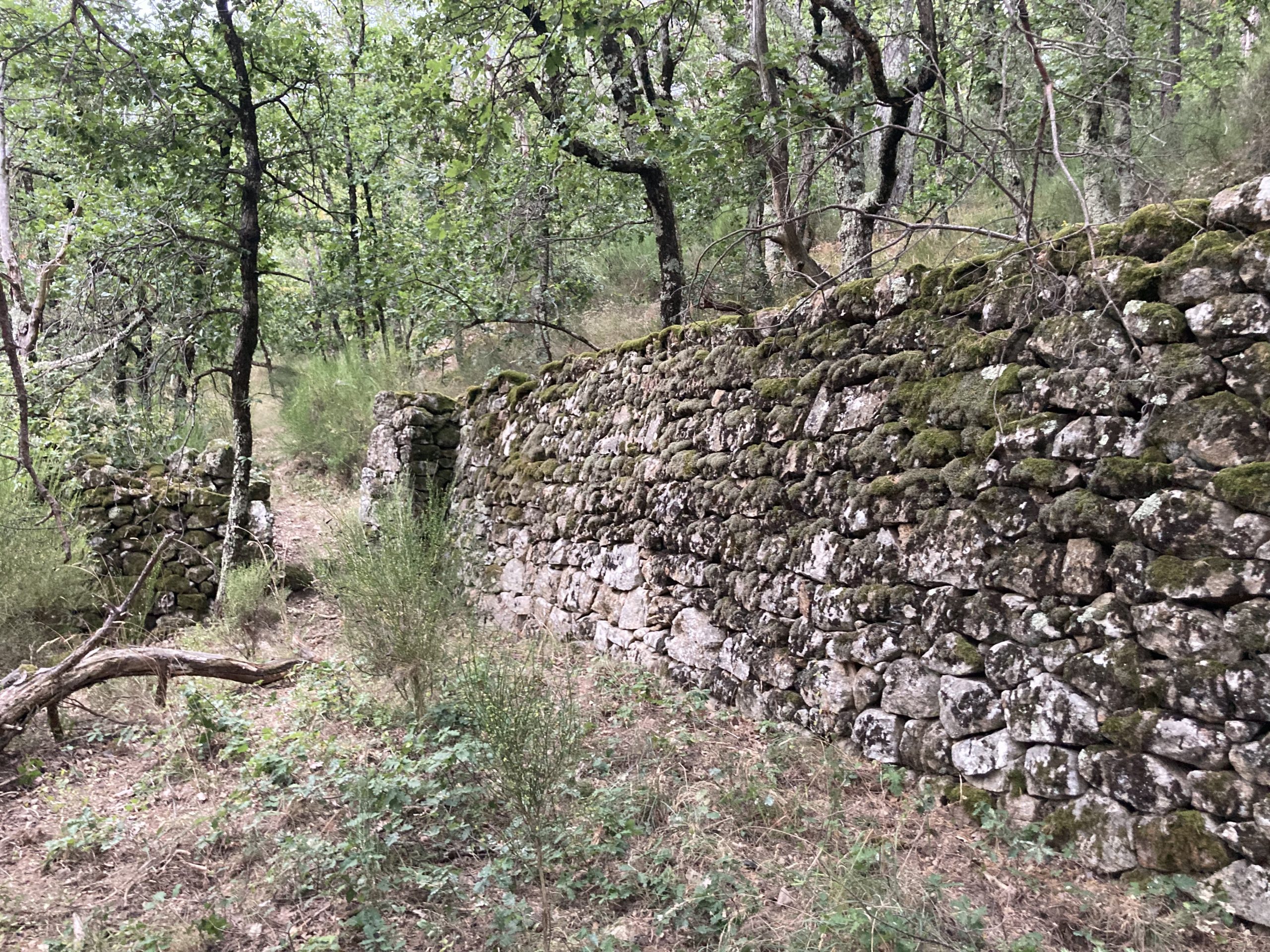
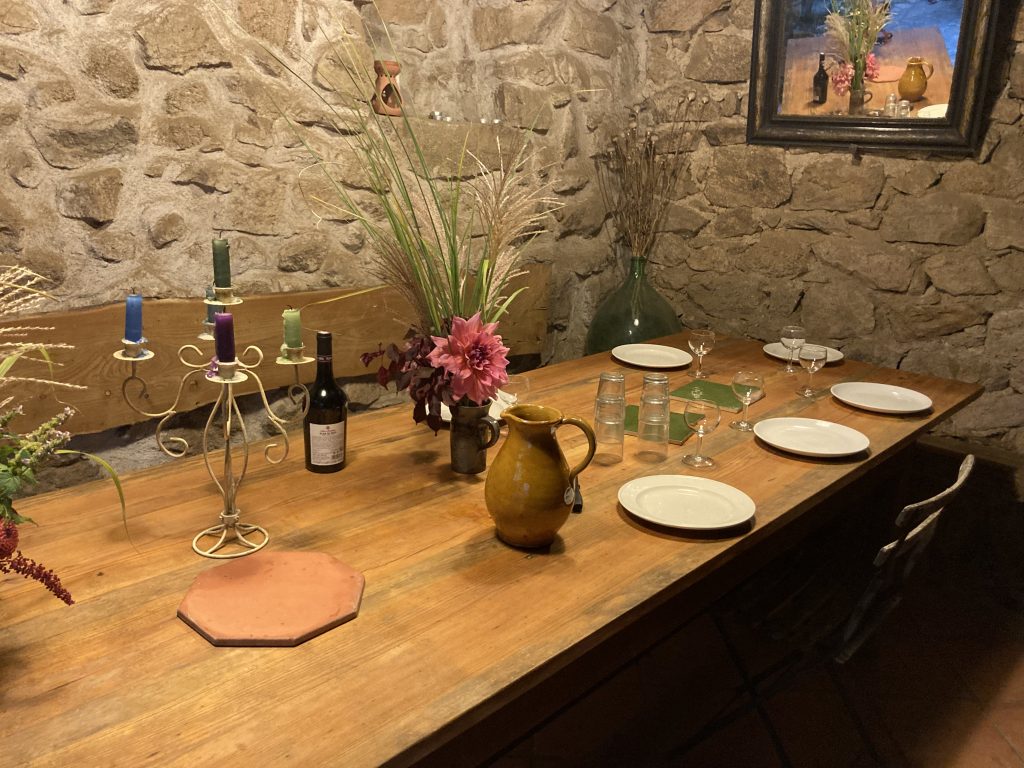
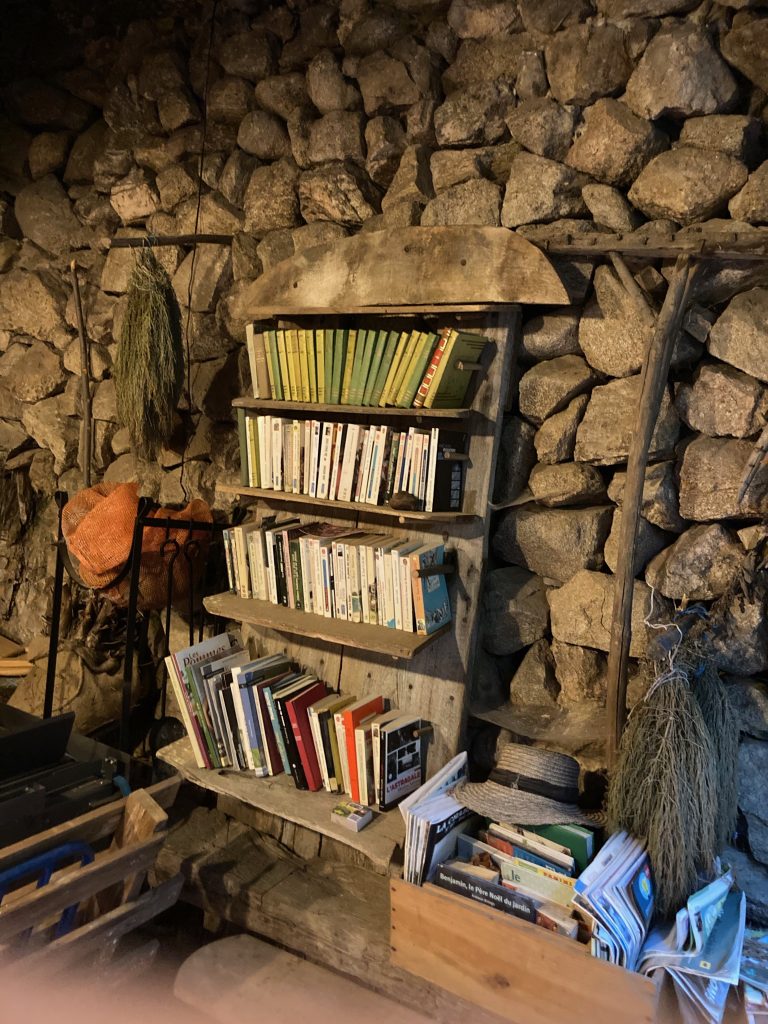
4th September 2021 @ 8:36 pm
What an absolutely wonderful post! The tale of the Russian emigré hermit whetted my appetite (surely your knowledge of Russian would gain you an entrée to his stronghold, imagine his surprise. His dogs would probably respond to Russian commands too – worth a try). Then the lost-and-found path in the forest, the secret garden… It was a delight to follow along. Now I want more!
6th September 2021 @ 6:51 am
Thank you Christine. I must say it was one of those 6am, up and itching from bites. So staying indoors at the laptop felt like a good idea. Plus I feel so sorry for my family and friends in Australia who are enduring long, long, long lockdowns. They needed a distracting read.
And no. On the plus side : Russian emigre. but the minus is angry hermit, plus rifles. I’ll give it a wide berth!
6th September 2021 @ 7:48 pm
Angry hermit with nasty dogs – I might perhaps have a go. But angry hermit with rifles, absolutely agree with you – no thank you, Russian speaker or not. So sorry about your bites, but glad it produced this lovely story. I think we don’t have aoûtats here, I’ve never heard of people being afflicted by them. Ticks, yes. Fleas from local dogs lying on the threshold hoping for scraps, yes. But not the dreaded aoûtats.
People in Australia are having a very hard time, will this virus ever go away!